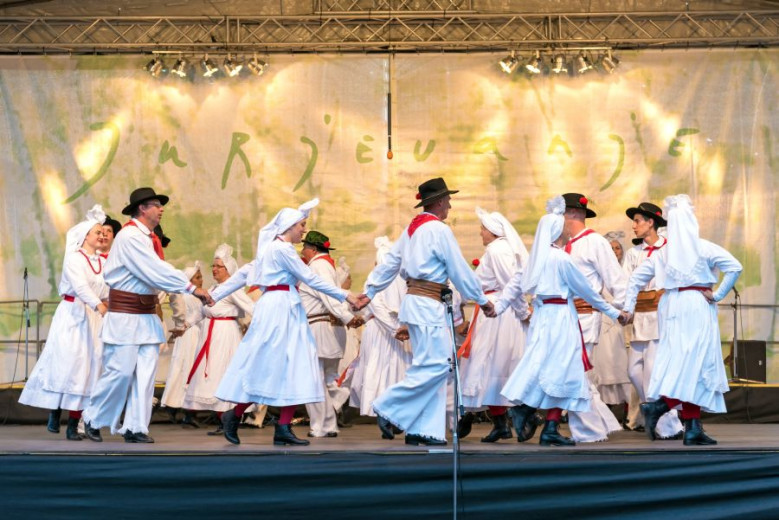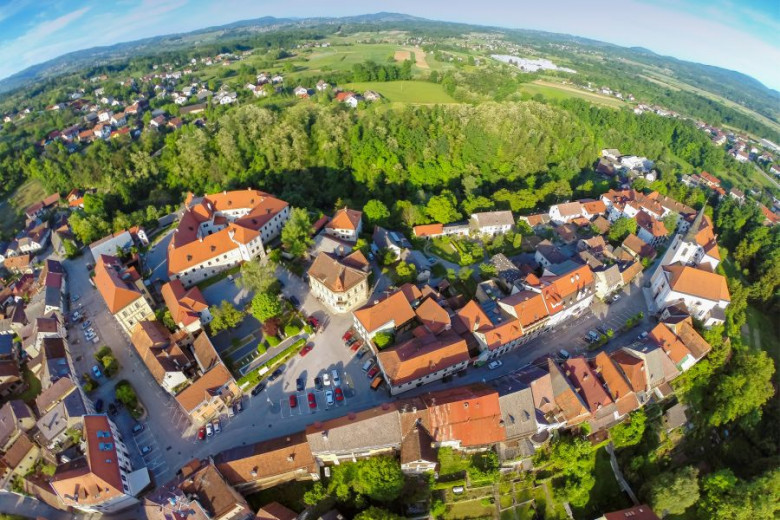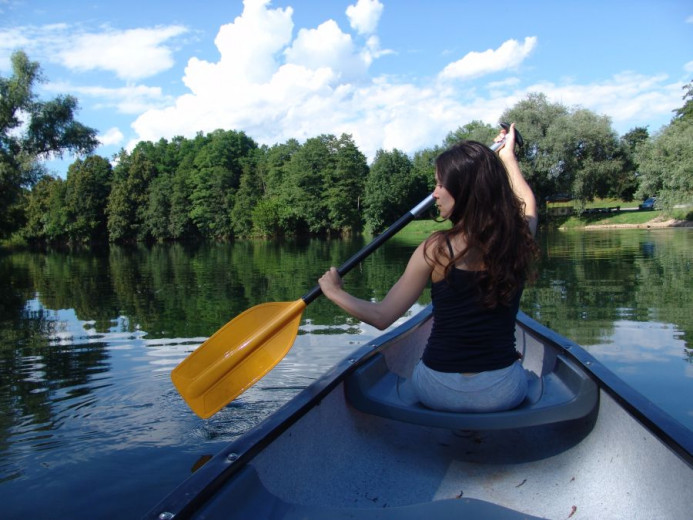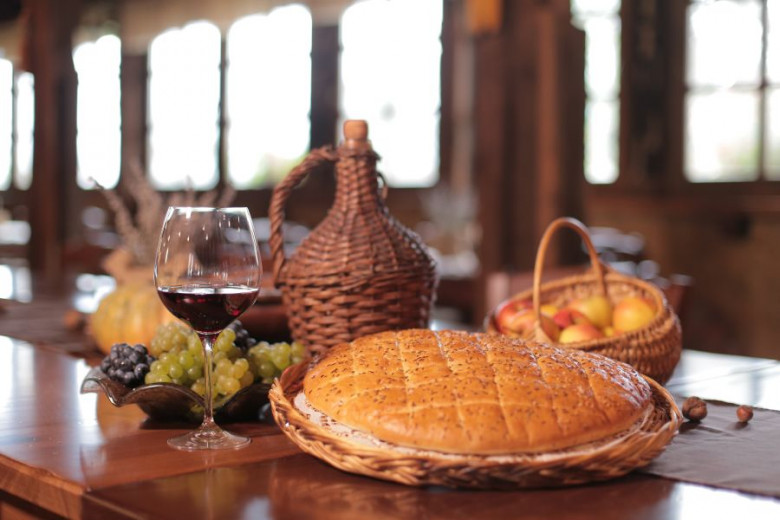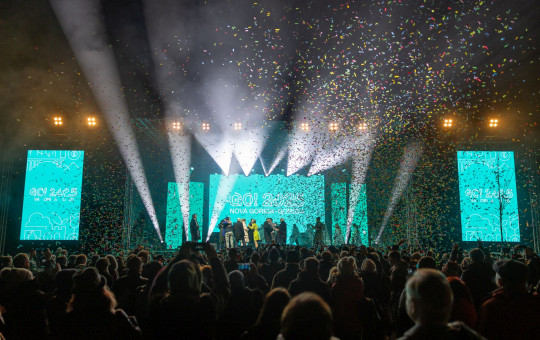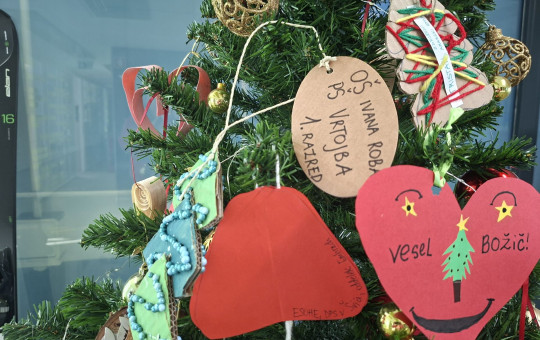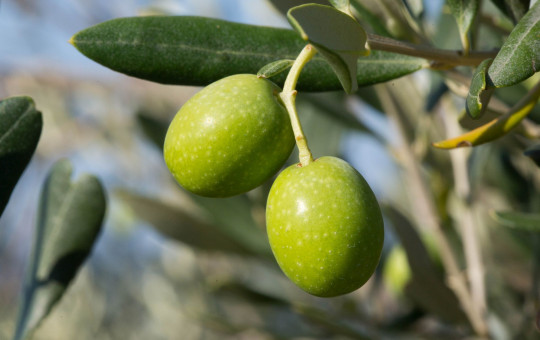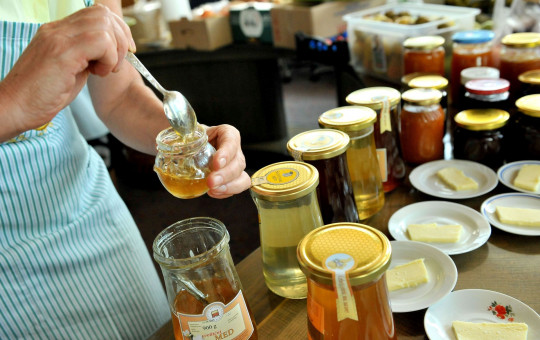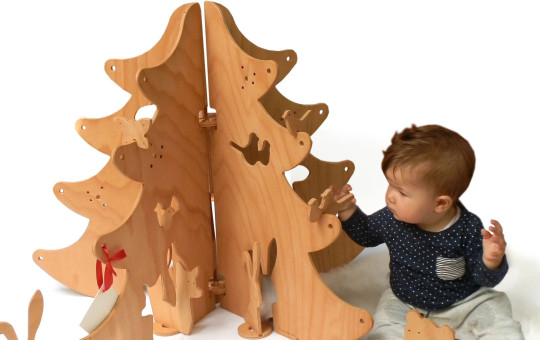Date: 1. October 2019
Time to read: 3 min
The hilly landscape enchants from first sight. The green stands of silver birches, the gleaming river Kolpa, the vineyards with their idyllic cottages and paths that lead you to interesting places with a fascinating history. Bela krajina attracts visitors with its glorious countryside and tranquillity, yet its charm also lies in a rich and varied cultural heritage. Črnomelj, Metlika and Semič are places you must visit if you wish to see the principal sights of the region and experience the authentic character of Bela krajina.
Bela krajina’s biggest town
Črnomelj is Bela krajina’s biggest town and its centre. The origins of the town date back to antiquity. The old town centre stands on a river bend where the Dobličica meets the Lahinja. Notable buildings include the medieval castle, the former commandry of the Order of Teutonic Knights and the former savings and loan bank. Also of interest is the Primožič House, which has been proclaimed a cultural monument of local significance. Today, local arts and crafts products are sold here, and the house hosts frequent crafts workshops and exhibitions.
Črnomelj is also the start of the Bela krajina wine and tourism route. As well as enjoying the marvellous natural surroundings, visitors should be sure to visit the region’s vineyard cottages and sample the local wines and characteristic dishes.
Jurjevanje – the oldest folklore festival in Slovenia
Jurjevanje in Bela krajina, a festival that has taken place regularly since 1964, is based on the folk tradition of Bela krajina and other regions of Slovenia and helps conserve the area’s heritage of dance, song and music.
The festival runs for five days in June and every year hosts international folklore groups and other cultural groups from all over the world. In this way it passes from the local level to the global, and creates a vibrant and varied intercultural space where the traditional interweaves with the modern.
The always interesting festival programme takes place at various venues around Črnomelj and offers something for all generations. The festival also gives visitors the opportunity to sample gastronomic specialities and fine wines, and of course the chance to meet the mythological hero of spring, Green George himself.
Medieval Metlika
Metlika boasts a varied and diverse natural and cultural heritage. Once a true crossroads of cultures, nations and religions, it was for 200 years the capital of the Habsburg military frontier zone known as the Militärgrenze. The town began to flourish in the late nineteenth century, a period that saw the establishment of the first organised firefighters in Slovenia, the creation of the first national reading society in Bela krajina and the wider Dolenjska region, and the founding of the first savings and loan bank. The medieval town consists of three picturesque squares, on one of which stands the imposing Metlika Castle, today home to the Bela krajina Museum and the Slovenian Firefighting Museum. In the summer months the castle courtyard hosts a series of international cultural events under the banner Pridi zvečer na grad (Come to the Castle Tonight), with a high-quality programme of music, poetry, dance and theatre, featuring top local and foreign performers. An unforgettable experience in the wonderful atmosphere of the castle.
Wine Spring – the biggest wine festival in Slovenia
For three days in May, Metlika hosts a festival known as Wine Spring (Vinska vigred). This traditional event based around winemaking and local culture takes place in the three squares of the old town centre. During this time, the region’s wines are judged and placed on display. The event also includes a flatbread competition and the coronation of the wine queen. Visitors have the chance to discover local customs and traditions, enjoy a varied cultural programme featuring folklore groups, tamburitza ensembles, choirs and wind bands. They can also visit the town’s museums, sample local Bela krajina specialities and award-winning wines and dance to music performed by local groups.
The unspoilt nature of the river Kolpa
Metlika is bounded to the south by the river Kolpa, one of the cleanest rivers in Slovenia. The Kolpa is very well stocked with fish and other aquatic species, many of them rare and protected. In 2010 the Kolpa was awarded the prestigious title of European Destination of Excellence (EDEN).
The river Kolpa and its banks offer many opportunities to spend free time in an active way. Swimming, fishing, rafting, kayaking and canoeing, walks on marked trails and relaxation in wonderful natural surroundings.
If you would like to spend more time by the Kolpa, you can stay at one of the area’s farm stays or campsites. Big Berry, a modern campsite in the little village of Primostek, where guests stay in one of seven mobile homes, is particularly attractive.
The Kolpa Nature Park is a protected landscape extending along the Kolpa in the area between Stari Trg and Dragoši, entirely within the municipality of Črnomelj. The park also preserves and sustains the area’s rich cultural heritage. Castles, mills and sawmills on the Kolpa adorn the landscape, while farms of the dvor type represent a particularly interesting feature. Built around a central courtyard that is enclosed on all four sides, a dvor usually consists of a farmhouse, a barn and a stable. Within the Kolpa Nature Park, Šokec Farm (Šokčev dvor) in Žuniči is a protected cultural monument that is open to visitors and represents a form of rural dwelling characteristic of this part of Bela krajina. Within the farmhouse, which has been fully restored, you can see a typical farm room with antique furniture, a baby’s cradle, old farming clothes, home-made linen, and so on. Another room is arranged as a dining room with an old bread oven.
Lahinja Nature Park
Another enchanting river, besides the Kolpa, is the Lahinja, which boasts a naturally conserved headwaters area. Woods, marshes and wet meadows line the river. Various karst landforms and botanical curiosities may be found in the Lahinja Nature Park, which has a rich natural and cultural heritage. The park contains eight protected natural monuments, six cultural monuments and two nature reserves: Nerajski Lugi (marshy meadows at the point where the Nerajčiča stream flows into the Lahinja) and Lahinjski (Lahinja) Lugi. Among the fauna of the Mlaka marsh, we even find the European pond turtle. In the sixteenth century a castle was built on a bend of the Lahinja but later abandoned. A church stands above the bend, with the year 1638 inscribed over its stone doorway. Next to the river stand a sawmill and mill, today operated as tourist attractions. Marked themed trails lead visitors around the park on foot (a circuit of the park takes around three hours) or by bicycle. The Lahinja is also suitable for fishing and boating.
By train to Semič
The municipality of Semič covers the area between the foot of the forested plateau of Kočevski Rog and the slopes of the Gorjanci. Travelling to Semič by train offers the most beautiful view of this corner of Bela krajina: green hills and vineyards with white houses and cottages dotted among them; below the vineyards, the market town of Semič with its parish church dedicated to St Stephen, in the baroque classical style. Semič still conserves part of the defensive enclosure or tabor built to protect the settlement against the Turks. The tabor house, which stands inside the defensive walls, today hosts exhibitions of paintings and cultural events. Semič is also known for beekeeping and honey.
Flavours of Bela krajina
Bela krajina cuisine is extremely rich and includes a number of excellent dishes that may be sampled in select restaurants in the region.
The Tastes of Bela krajina project aims to present the full variety of Bela krajina cuisine, by focusing on ten characteristic dishes chosen through a series of workshops led by acclaimed Slovenian chef Tomaž Vozelj, president of the Association of Chefs and Pâtissiers of Slovenia.
Visitors can sample the famous belokranjska pogača (a leavened flatbread sprinkled with caraway and coarse salt), belokranjska povitica (rolled filo pastry with a curd cheese and cream filling), belokranjsko cvrtje (mince and bread patties), belokranjski nadev (bread, eggs and ham stuffing in a casing) also known as semiško fulanje with horseradish, buckwheat povitica with raisins, belokranjska šara (a vegetable and bacon stew), cereal sausage (made with millet and pork), mutton and cabbage stew, belokranjski žlinkrofi (pasta dumplings filled with bread and calf’s lung), and – an absolute must – spit-roasted suckling pig or lamb. Taste Bela krajina!
Bela krajina offers something for every visitor. Tranquillity and relaxation in beautiful natural surroundings, merriment and enjoyment of typical Bela krajina dishes and local wines, adrenaline on the rivers, dancing and socialising, or, last but not least, a chat with the friendly and hospitable inhabitants of the region.

